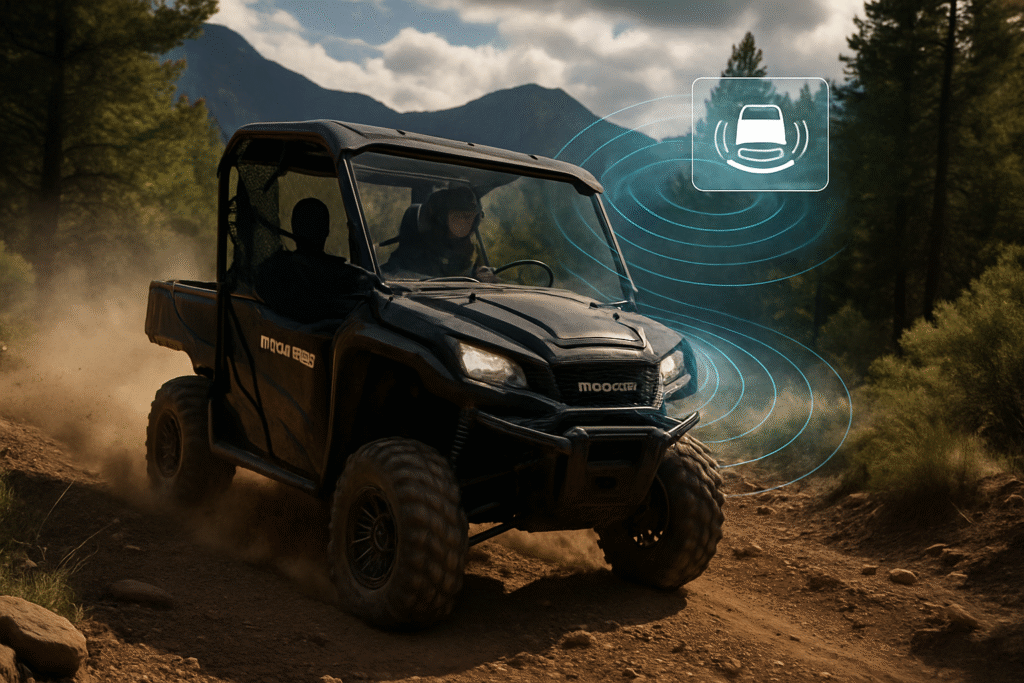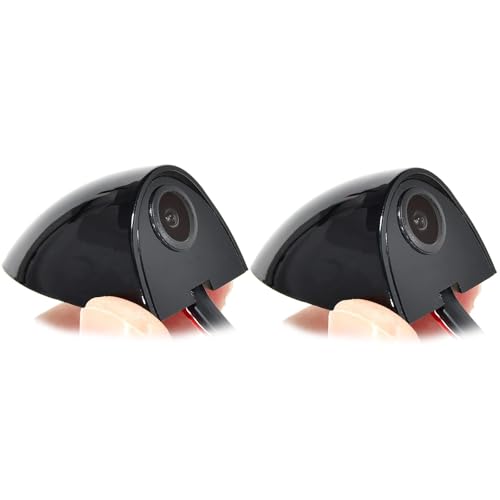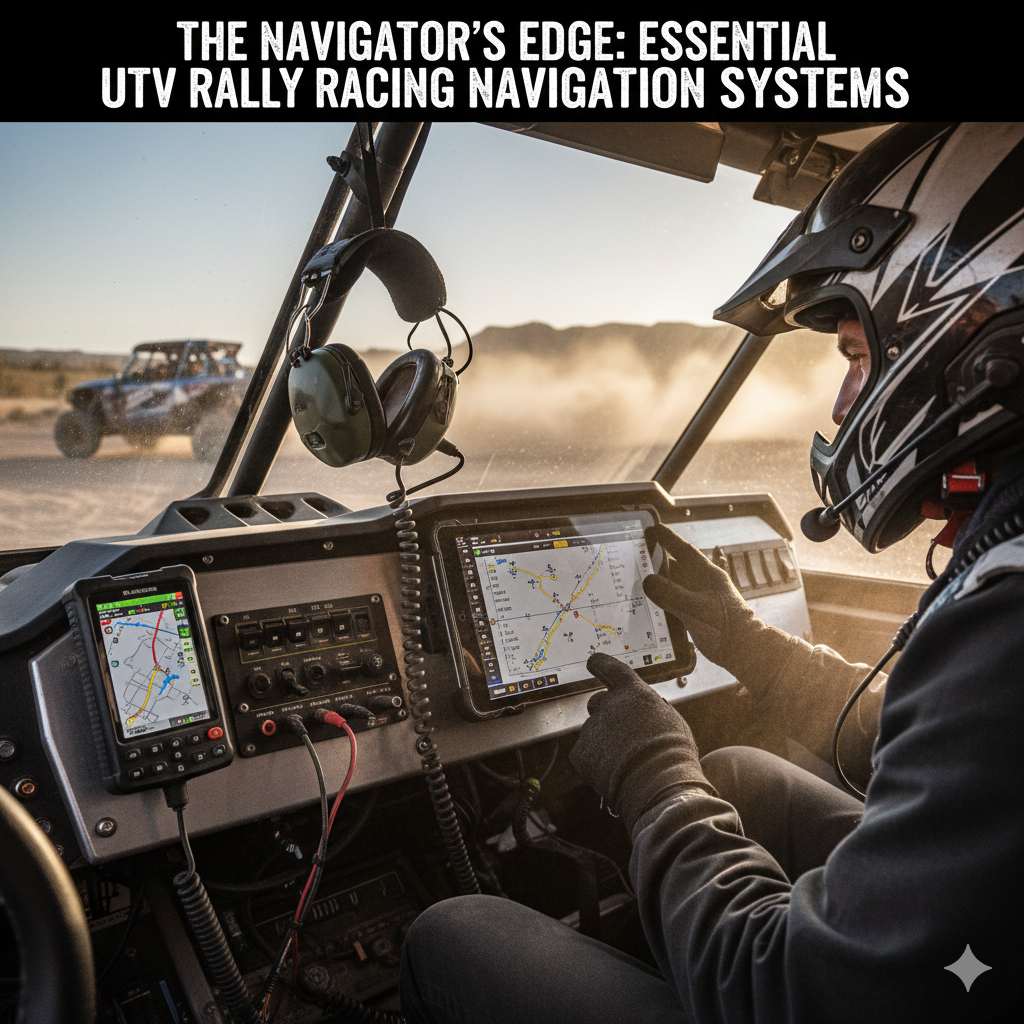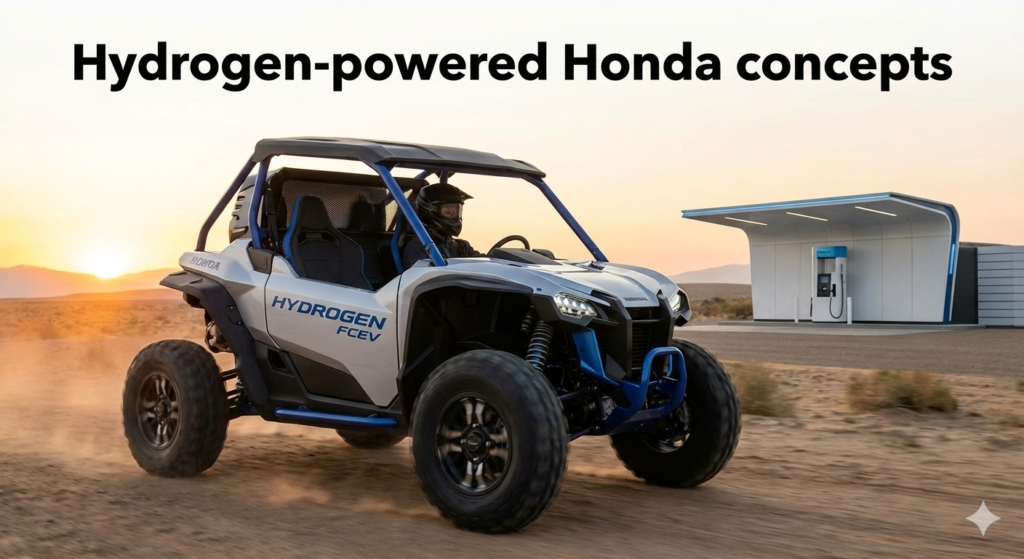Hey fellow off-road enthusiasts!
Have you ever found yourself tackling a challenging trail, wishing you had an extra set of eyes or a bit more assistance to navigate those tricky obstacles? I certainly have!
The world of off-roading is all about adventure, pushing limits, and experiencing the raw beauty of nature.
But let’s be honest, it also comes with its fair share of risks.
That’s where Advanced Driver Assistance Systems (ADAS) come into play, and believe it or not, they’re not just for your daily commuter anymore.
For years, ADAS technology has been revolutionizing the safety and convenience of passenger cars.
Think about features like adaptive cruise control, blind-spot monitoring, and automatic emergency braking.
These systems have become commonplace, helping drivers avoid accidents and reduce fatigue.
But what about our beloved off-road machines, like the rugged and reliable Honda Pioneer?
Can these sophisticated systems truly make a difference when we’re far from paved roads, battling mud, rocks, and steep inclines?
In this comprehensive guide, we’re going to dive deep into the exciting realm of ADAS for off-road vehicles.
We’ll explore how these technologies are being adapted for the unique challenges of the wilderness,
whether your Honda Pioneer comes with any built-in ADAS features, and what aftermarket options are available to enhance your off-road adventures.
So, buckle up, because we’re about to embark on an insightful journey into making our off-road experiences safer and more enjoyable!
What Exactly is ADAS, and How Does it Apply Off-Road?
At its core, ADAS refers to a combination of sensors and microprocessors designed to assist drivers with the safe operation of a vehicle [1].
These “smart” systems gather a wealth of information from the vehicle’s surroundings and internal conditions, providing crucial data to the driver and, in some cases, even taking control to prevent accidents.
Now, you might be thinking, “That sounds great for a highway, but what about a rocky trail or a muddy forest path?”
And you’d be right to question it! Off-road environments present a unique set of challenges that differ significantly from typical on-road driving.
Passenger vehicles rely heavily on visual cues like lane markings, traffic signs, and road infrastructure.
These simply don’t exist on a construction site, an agricultural field, or your favorite backcountry trail [1].
This is where off-road ADAS technology truly shines.
Instead of relying on painted lines, these systems employ advanced detection methods such as LiDAR (Light Detection and Ranging), RADAR (Radio Detection and Ranging), and Advanced View Monitoring (AVM).
These technologies can “see” through dust, fog, and darkness, providing real-time data about obstacles, terrain changes, and other vehicles or personnel in the vicinity [1].
Imagine navigating a dense forest at dusk, and your UTV’s radar system alerts you to a fallen log just beyond your headlight’s reach – that’s the power of off-road ADAS!
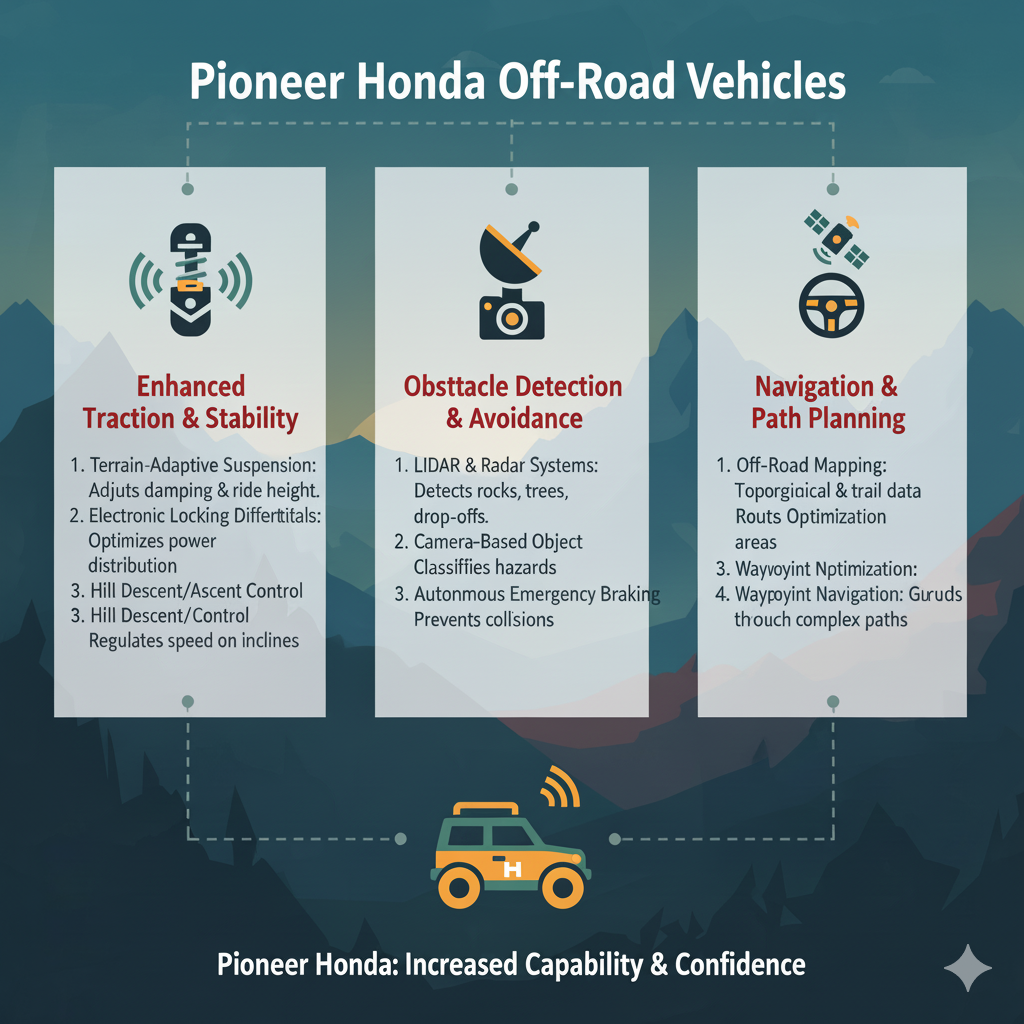
The Unique Advantages of ADAS in the Wild
Integrating ADAS into off-road vehicles isn’t just about mimicking car features;
it’s about enhancing safety and efficiency in ways specific to rugged environments.
Here are some key benefits:
Improved Visibility: Dust, mud, heavy rain, or dense foliage can severely obscure a driver’s vision.
RADAR, for instance, can penetrate these elements, allowing the vehicle’s systems to provide the driver with a clearer picture of their surroundings than the human eye alone [1].
This is a game-changer when you’re pushing through challenging conditions.
Greater Precision: For tasks requiring pinpoint accuracy, like agricultural machinery planting seeds or construction equipment moving materials,
ADAS-enabled vehicles can navigate to precise locations and perform functions with objective accuracy, minimizing human error [1].
While your Pioneer might not be planting seeds, this precision translates to better obstacle avoidance and more controlled maneuvering.
Enhanced Safety: This is perhaps the most critical advantage. ADAS technology actively monitors for potential hazards, watches for pedestrians or wildlife, and can even warn a fatigued or distracted driver with audible alerts [1].
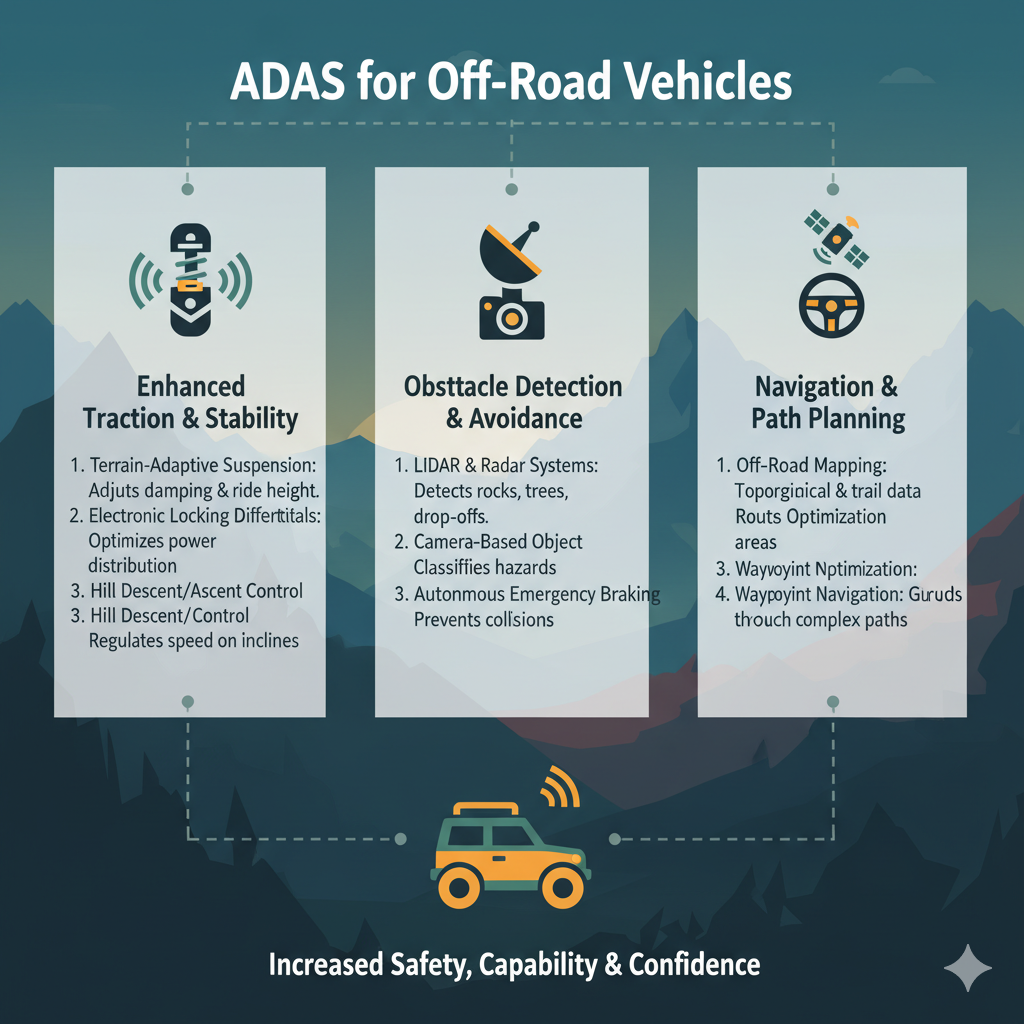
In a dynamic off-road environment where unexpected situations are the norm, these warnings can be the difference between a close call and a serious incident.
Fleet Management: For commercial off-road operations or groups of riders, ADAS technology enables communication between vehicles and infrastructure, providing a holistic view that helps minimize downtime and optimize equipment use [1].
While less critical for recreational users, it highlights the sophisticated capabilities of these systems.
Honda Pioneer and ADAS: What’s Built-In and What’s Not?
Now, let’s talk about our star, the Honda Pioneer.
These side-by-side (SxS) utility vehicles are renowned for their durability, powerful engines, and versatility.
Models like the Pioneer 1000, 700, and 520 are built to tackle tough terrains and demanding tasks.
They come equipped with robust safety features that are essential for off-road use, such as sturdy roll cages, advanced braking systems, and stability control, ensuring you’re protected when the going gets rough [2].
However, when we look for explicit mentions of advanced driver-assistance systems like adaptive cruise control, blind-spot detection, or forward collision warning as standard or optional factory-installed features, the picture becomes a bit clearer.
My research indicates that Honda’s official literature and product descriptions for the Pioneer series primarily focus on mechanical performance, transmission capabilities, towing capacity, and general utility [2].
There isn’t a strong emphasis on integrated ADAS features in the same way you’d find in a modern passenger car.
It’s important to distinguish this from Honda’s automotive division, which offers a comprehensive suite of ADAS technologies called Honda Sensing.
This system includes features like Collision Mitigation Braking System, Road Departure Mitigation System, Adaptive Cruise Control, and Lane Keeping Assist System.
But these are specifically designed and calibrated for on-road passenger vehicles and are not currently advertised or adapted for their off-road lineup like the Pioneer series [2].
So, while your Honda Pioneer is incredibly capable and built with safety in mind, it’s unlikely to come with sophisticated ADAS features directly from the factory.
This means if you’re looking to add these advanced layers of safety and assistance, you’ll need to explore aftermarket solutions.
Aftermarket ADAS Solutions for Your Honda Pioneer
The good news is that the aftermarket industry is vast and innovative!
While you might not find a “Honda Pioneer ADAS kit” specifically designed as a plug-and-play solution, there are numerous generic aftermarket ADAS components that can be adapted to enhance your off-road experience.
This will require a bit of DIY spirit or professional installation, but the benefits can be well worth the effort [3].
Here are some categories of aftermarket ADAS products you might consider:
1. Blind Spot Monitoring (BSM) Systems
What it is: These systems use radar sensors, typically mounted on the rear or sides of your vehicle, to detect other vehicles, obstacles, or even wildlife in your blind spots.
They provide visual alerts (often LED indicators on your mirrors or dashboard) and sometimes audible warnings when a potential hazard is detected, especially during maneuvers like changing lanes or backing up [3].
Why it’s great for off-road: Imagine navigating a tight trail with limited visibility, or backing up in a dusty environment.
A BSM system can alert you to a hidden rock, a tree stump, or another rider you might not see.
This is incredibly valuable for preventing collisions and improving situational awareness in challenging conditions.
Considerations for Pioneer: You’ll need to find suitable mounting locations for the radar sensors that protect them from impact and the elements (mud, water, debris).
Wiring will need to be routed carefully through the vehicle’s frame to the cabin for the display and alert system. Look for systems with robust, waterproof sensors.
2. Dash Cams with ADAS Features
What it is: Many modern dash cameras go beyond simple recording.
They incorporate ADAS functionalities like Forward Collision Warning (FCW), Lane Departure Warning (LDW), and even pedestrian detection.
These cameras use their built-in optics and AI algorithms to analyze the road (or trail) ahead and provide visual and audible alerts if they detect a potential hazard or if you’re drifting out of your lane [3].
Why it’s great for off-road: A dash cam with FCW can warn you if you’re approaching an obstacle too quickly, giving you precious extra seconds to react.
While LDW might be less relevant on an unmarked trail, the obstacle detection capabilities are highly beneficial.
Plus, you get the added benefit of recording your adventures (and any incidents) in high definition!
Considerations for Pioneer: Installation is generally simpler, usually involving mounting the camera on the windshield or dashboard and connecting it to a power source.
Ensure the camera is securely mounted to withstand vibrations and impacts common in off-road driving.
Look for models with wide-angle lenses and good low-light performance.
3. Universal Radar Systems
What it is: Some manufacturers offer universal radar systems that can be integrated into vehicles for general object detection.
These are often more customizable and can be used to build bespoke forward collision warning or obstacle detection systems [3].
Why it’s great for off-road: If you’re looking for a more integrated and robust solution than a dash cam, a universal radar system can provide more precise and reliable object detection.
This could be particularly useful for specialized applications or for those who want to create a more comprehensive custom ADAS setup.
Considerations for Pioneer: This option typically requires more technical expertise for installation and integration.
You’ll need to consider how to interpret the radar data and how to provide alerts to the driver. This is often a choice for advanced DIYers or professional customizers.
Optimizing Your Off-Road ADAS Setup
Simply installing an aftermarket ADAS component isn’t enough; optimizing its performance for the unique demands of off-road driving is crucial.
Here are some tips:
Strategic Sensor Placement: This is paramount. Sensors need to be mounted in locations that offer an unobstructed view while also being protected from physical damage, mud, water, and debris. Consider custom brackets or protective housings.
Power Management: Off-road vehicles often have limited electrical systems.
Ensure your ADAS components are properly wired and fused, and consider their power draw, especially if you’re adding multiple systems.
Calibration for Terrain: Unlike on-road systems calibrated for flat, predictable surfaces, off-road ADAS needs to account for uneven terrain, steep inclines, and varied obstacles.
While aftermarket systems may not offer specific “off-road modes,” understanding their limitations and adjusting your driving accordingly is key.
Regular Maintenance: The harsh off-road environment means sensors can get dirty or misaligned.
Regular cleaning and checking of sensor calibration will ensure consistent performance.
Driver Training: ADAS systems are aids, not replacements for attentive driving.
Understand how your systems work, their limitations, and always remain engaged and aware of your surroundings.
The Future is Bright: ADAS and Off-Roading
The integration of ADAS into off-road vehicles is still in its early stages compared to passenger cars, but the potential is immense.
As technology advances, we can expect to see more sophisticated, purpose-built ADAS solutions for UTVs like the Honda Pioneer.
Imagine systems that can automatically adjust suspension for upcoming terrain, provide real-time 3D mapping of the trail ahead, or even offer semi-autonomous crawling over difficult obstacles.
For now, by carefully selecting and installing aftermarket components, you can significantly enhance the safety and enjoyment of your off-road adventures.
It’s about leveraging technology to make the wilderness a little safer, without taking away from the thrill of the ride.
So, whether you’re a seasoned off-roader or just starting out, consider how ADAS can be a valuable co-pilot on your next adventure. Stay safe out there, and happy trails!
—
References
[1] KUS Americas, Inc. (2021, February 2). *ADAS for off Road Vehicles and Equipment*. [
[2] Honda Powersports. (n.d.). *Pioneer 1000 – Side-by-Side (SxS) UTv

